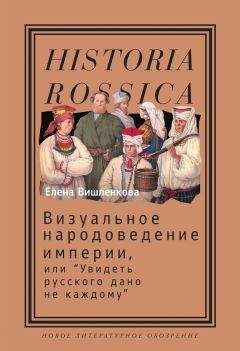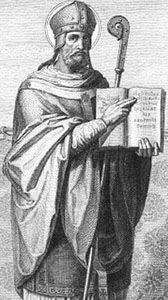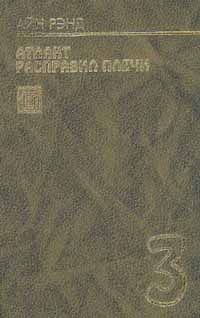5. Baehr S. L. The Paradise Myth in Eighteenth Century Russia. Stanford, CA: Stanford University Press, 1991. XIV, 308 p.
6. Barkhatova E. V. Visual Russia: Catherine II’s Russia through the Eyes of Foreign Graphic Artists // Russia Engages the World, 1453–1825 / ed. C. H. Whittaker, E. Kasinec, R. H. Davis. Cambridge, Mass., 2003. P. 72–89
7. Bauman Z. Allosemitism: premodern, modern, postmodern // Modernity, Culture and «the Jew» / ed. B. Cheyette and L. Marcus. Cambridge; Oxford, 1998. Р. 143–156.
8. Bauman Z. Life in Fragments: Essays on Postmodern Morality. Oxford; Cambridge, Mass.: Blackwell, 1995. VI, 293 p.
9. Bauman Z. Modernity or ambivalence // Theory, Culture and Society. 1990. № 7. P. 143–169.
10. Bauman Z. Postmodernity: Change or menace? Lancaster: Centre for the Study of Cultural Values, 1991. II, 16 p.
11. Becker S. Russia Between Asia and West: The Intelligensia, Russian National Identity and the Asian Borderlands // Central Asian Survey. 1991. Vol. 10, № 4. P. 47–64.
12. Beeld van de andere, vertoog over het zelf: over wilden en narren, boeren en bedelaars / [catalogus] Dr. P. Vandenbroeck; uitg. Ministerie van de Vlaamse gemeenschap, Koninklijk museum voor schone kunsten, Antwerpen. Antwerpen: Ministerie van de Vlaamse gemeenschap, Koninklijk museum voor schone kunsten, 1987. 213 p.
13. Bhabha H. The Localition of Culture. London: Routledge, 1994. XIII, 285 p.
14. Bloom H. The Western Canon: the books and school of the ages. New York: Riverhead Books, 1995 [cop. 1994]. X, 546 p.
15. Boorstin D. J. The Image, or What happened to the American dream. New York: Atheneum, 1962 [cop. 1961]. 315 p.
16. Bordo J. Picture and Witness at the Site of the Wilderness // Critical Inquiry. 2000. Vol. 26, № 2. P. 224–247.
17. Bowlt J. Art and Violence: The Russian Caricature in the Early Nineteenth and Early Twentieth Centuries // Twentieth Century Studies. 1975. December (№ 13/14). P. 56–76.
18. Breton D. L. Des Visages: essai d’anthropologie. Paris: Éditions A.M. Métailié: Diffusion, Seuil, 1992. 327 p.
19. Breton M. J. La Chine en Miniature, ou choix de costumes, arts et metiers de cet empire, representes par 74 gravures, la plupart d’apres les originaux inedit du cabinet de feu M. Bertin, ministre; accompagnes de notices explicatives, historiques et litteraires. Paris, 1811. Vol. 1–6.
20. Breton M. J. La Russie, ou Moeurs, usages et costumes des habitans de toutes les provinces de cet empire. Ouvrage orné de… planches, représentant plus de deux cents sujets, gravés sur les dessins originaux et d’après nature, de M. Damame-Démartrait et Robert Ker Porter. Extrait des ouvrages anglais et allemands les plus récents. Paris, 1813. Vol. 1–6.
21. Bringens N.-A. Volkstümliche Bilderkunde. München: Callwey, 1982. 156 s.
22. Broadly A. M. Napoleon in Caricature, 1795–1821. London; New York: John Lane: John Lane Co., 1911. Vol. 1–2.
23. Burke P. Eyewitnessing: The Uses of Images as Historical Evidence. London: Reaktion Books, 2001. 223 p.
24. Burke P. Popular Culture in Early Modern Europe. New York: Harper & Row, 1978. 365 p.
25. Bushkovitch P. The Formation of a National Consciousness in Early Modern Russia // Harvard Ukrainian Studies. 1986. Vol. 10, № 3/4. P. 355–376.
26. Champfleury. Histoire de la caricature au moyen âge et sous la renaissance. Paris: F. Dentu, 1871. XIX, 318 p.
27. Clarke E. D. Travels in Various Ñountries of Europe, Asia and Africa. London, 1810–1816. Vol .1–2.
28. Clifford J. Travelling Cultures // Cultural studies / ed., and with an introduction, by L. Grossberg, C. Nelson, P. A. Treichler. New York, 1992. P. 96–116.
29. Cocchiara G. The History of Folklore in Europe / translated from the Italian by J. N. McDaniel. Philadelphia: Institute for the Study of Human Issues, 1981. XXV, 703 p.
30. Colonial Ethnographies / ed. P. Pels, O. Salemink. New York: Harwood Academic Publ., 1995. 351 p. – (History and anthropology; vol. 8, issue 1/4.)
31. Confino A. Collective Memory and Cultural History: Problems of Method // American Historical Review. 1997. Vol. 102, № 5. P. 1386–1402.
32. Conversion to Modernities: The Globalization of Christianity / ed. P. Van der Veer. New York: Routledge, 1996. 287 p.
33. Cook A. S. Canons and Wisdoms. Philadelphia: University of Pennsylvania Press, 1993. XV, 213 p.
34. Cracraft J. The Petrine Revolution in Russian Culture. Cambridge, Mass.: The Belknap Press of Harvard University Press, 2004. XII, 560 p.
35. Crary J. Techniques of the Observer: On Vision and Modernity in the Nineteenth Century. Cambridge, Mass.: MIT Press, 1990. 171 p.
36. Curzon L. Introduction: Visual Culture and National Identity // Invisible Culture: An Electronic Journal for Visual Culture. 2003. Issue 5: Visual Culture and National Identity. http://www.rochester.edu/in_visible_culture/Issue_5/introduction.html (последнее посещение 10.11.2010.)
37. Dahlstein A. Costumes Moskovites et cries de S.-Petersbourg. Cassel, 1755.
38. Die Interdisziplinarität der Begriffsgeschichte / herausgegeben von Gunter Scholtz. Hamburg: Meiner, 2000. 200 s.
39. Donald D. The Age of Caricature: Satirical Prints in the Reign of George III. New Haven: Yale University Press, 1996. VIII, 248 р.
40. Donnert E. Russia in the Age of Enlightment / [translated from the German by Alison and Alistair Wightman]. Leipzig: Edition Leipzig, 1986. 219 р.
41. Du Maurier G. Social Pictorial Satire: reminiscences and appreciations of English illustrators of the past generation, by George Du Maurier. London; New York: Harper and brothers, 1898. IV, 100 p.
42. Eagleton T. The Idea of Culture. Oxford, UK; Malden, MA: Blackwell, 2000. 156 р.
43. Eco U. A Theory of Semiotics. London: Macmillan, 1977. IX, 354 р.
44. Edmondson L. Putting Mother Russia in a European Context // Art, Nation and Gender: Ethnic Landscapes, Myths and Mother-Figures / ed. T. Cusack and S. Bhreathnach-Lynch. Aldershot, 2003. P. 53–64.
45. Ely C. This Meager Nature: Landscape and National Identity in Imperial Russia. DeKalb: Northern Illinois University Press, 2002. XI, 278 p.
46. Empire Speaks Out: Languages of Rationalization and Self-Description in the Russian Empire / ed. I. Gerasimov, J. Kusber and A. Semyonov. Leiden; Boston: Brill, 2009. VI, 280 p.
47. Essai sur la Physiognomonie, destiné à faire connotre l’homme et à le faire aimer. La Haye, 1781–1803. Vol. 1–4.
48. Faber du Faur G. de. Campagne de Russie 1812. D’après le journal illustré d’un temoin oculaire avec introduction par Armand Dayot. Paris, 1831. 319 p.
49. Fishman D. E. Russia’s First Modern Jews: The Jews of Shklov. New York: New York University Press, 1995. XIII, 195 p.
50. Foucault M. Discipline and Punish / translated from the French by A. Sheridan. New York: Vintage Books, a division of Random House, 1979. 333 p.
51. Foucault M. The Battle for Chastity // Foucault M. Politics, Philosophy, Culture: interviews and other writings, 1977–1984 / translated by A. Sheridan and others; edited with an introduction by L. D. Kritzman. New York: Routledge, 1988. P. 227–241.
52. Frankel Ch. The Faith of Reason: The Idea of Progress in the French Enlightenment. New York, 1948. X, 165 p.
53. Freidberg A. The Mobilized and Virtual Gaze in Modernity // The Visual Culture Reader / ed., with introductions by N. Mirzoeff. London: Routledge, 1998. P. 253–278.
54. Frierson C. A. Peasant Icons: Representations of Rural People in Late Nineteenth-Century Russia. New York: Oxford University Press, 1993. X, 248 p.
55. Geissler C. G. H. Mahlerische Darstellungen der Sitten Gebräuche und Lustbarkeiten bey den Russischen, Tatarischen, Mongolischen und andern Volkern in Russischen Reich. Leipzig, 1803. Vol. 1–4.
56. Geissler Ch. G. H., Hempel F. Tableaux pittoresques des moeurs, des usages et des divertissements des Russes, Tartares, Mongols et autres nations de l’empire russe. Leipzig, 1804.
57. Geissler Ch.G.H. Second voyage de Pallas. Planches. Paris, 1811.
58. Geissler C. G. H, Richter J. G. Strafen der Russen. Leipzig, 1805.
59. Geissler C. G. H. Spiele und Belustigungen der Russen aus den niedern Volks-Klassen. Leipzig, 1805. 12 fine copperplates in contemporary handcolouring.
60. Geissler Ch. G. H. Beschreibung der St. Petersbourgische Hausierer heraus gegebenen Kupfer zur Erklärung der darauf abgebildeten Figuren. Leipzig, 1794.
61. Georgi J.G. Bemerkungen einer Reise im Russischen Reich in den Jahren 1773 und 1774. St. Petersburg: Kayserl. Academie der Wissenschaften, 1775. Bd .1–2.
62. Georgi J. G. Beschreibung aller Nationen des Russischen Reichs, ihrer Lebensart: Religion, Gebräuche, Wohnungen, Kleidungen und übringen Merkwurdigkeiten. St. Petersburg: Müller, 1776. Bd. 1: Nationen vom Finnischen Stamm. [4], XII, [4], 84 s.; Bd. 2: Tatarische Nationen. [4], s. 85–272; 1877. Bd. 3: Samojedische, Mandschurische und ostlichste Sibirische Nationen. [4], s. 273–396; 1780. Bd. 4: Mongolishce Völker, Russen und die noch übrigen Nationen. [4], s. 397–530.
63. Georgi J. G. Description de toutes les Nations de L’Empire de Russie, où l’on expose Leurs Moeurs, Religions, Usages, Habitations, Habillements et Autres Particularités Remarquables. St. Petersbourg: Charles Guillaume Müller, 1776. Vol. 1: Les nations d’origine finnoise. 108 p.; Vol. 2: Les nations tatares établies dans cet empire. 228 p.; 1777. Vol. 3: Les nations samoyedes et mandshoures, et les peuples les plus orientaux de la Siberie. 164 p.
64. Georgi J. G. Russland: Beschreibung aller Nationen des russischen Reiches, ihrer Lebensart, Religion, Gebräuche, Wohnungen, Kleidungen und übrigen Merkwurdigkeiten. In 2 Bd. Leipzig: im Verlage der Dykischen Buchhandlung, 1783. XII, [6], 530, [10] s.
65. Gestwa K. Der Blick auf Land und Leute. Eine historische Topographie russischer Landschaften in Zeitalter von Absolutismus, Aufklarung und Romantik // Historische Zeitschrift. 2004. Bd. 279, № 1. S. 63–125.
66. Gleason W. J. Moral Idealists, Bureaucracy and Catherine the Great. New Brunswick, N. J.: Rutgers University Press, 1981. 252 p.
67. Goffman E. Gender Advertisements. London: Macmillan, 1979. VIII, 84 p.
68. Gombrich E. H. Art History and the Social Science // Gombrich E.H. Ideals and Idols: Essays on Values in History and Art. Oxford: Phaidon, 1979. P. 131–167.
69. Gough K. Anthropology: Child of Imperialism // Monthly Review. 1968. Vol. 19, № 11. P. 12–27.
70. Grand-Carteret J. Napoléon en images: (estampes anglaises): (Portraits en caricatures) avec 130 reproductions d’après les originaux. Paris, 1895.
71. Gaudio M. Swallowing the Evidence: William Bartram and the Limits of Enlightenment// Winterthur Portfolio. Vol .36. № 1. 2001. P. 1–17.
72. Guillory J. Cultural Capital: The Problem of Literary Canon Formation. Chicago: University of Chicago Press, 1993. XV, 392 p.
73. Habermas J. A Berlin republic: Writings on Germany / translated by S. Rendall; introduction by P. U. Hohendahl. Lincoln, Neb.: University of Nebraska Press, 1997. 187 p.
74. Hacking I. The Taming of Chance. Cambridge, UK: Cambridge University Press, 1990. XIII, 264 p.
75. Hallett M. The Spectacle of Difference: Graphic Satire in the Age of Hogarth. New Haven: Published for the Paul Mellon Centre for Studies in British Art by Yale University Press, 1999. XII, 259 p.
76. Haskell F. History and Images: Art and Interpretation of the Past. New Haven; London: Yale University Press, 1993. X, 558 p.
77. Helgerson R. Camoes, Hakluyt and the Voyages of Two Nations // Colonialism and Culture / ed. N. B. Dirks. Ann Arbor: University of Michigan Press, 1992. P. 27–63.
78. Hempel F., Geissler Ch. G. H. Abbildung und Beschreibung der Volkerstamme und Volker unter des russischen Kaisers Alexander menschenfreundlichen Regierung. Leipzig, 1803.
79. Herder J. G. Ideen zur Philosophie d.r. Geschichte der Menschheit. Riga; Leipzig, 1784–1791. Bd. 1–4.
80. Herder J. G. Zwei Preisshriften. I. Über den Ursprung der Sprache. 2. Ursachen des gesunknen Geschmacks bei den verschiednen Völkern, da er geblühet. Berlin, 1789.
81. Herder J. G., Liebeskind A. J. Palmblätter. Erlesene morgenländische Erzählungen für die Jugend. Neue Auff. Durchgesehen v. J. A. Krummancher. Berlin; Gotha; Jena, 1788–1816. Bd. 1–4.
82. Hilton A. Russian Folk Art. Bloomington: Indiana University Press, 1995. XXI, 356 p.
83. Hogarth and English Caricature / ed. F. D. Klingender. London; New York: Transatlantic Arts, 1944. XVI, 72 p.
84. Holmes R. The Age of Wonder: How the Romantic Generation Discovered the Beauty and Terror of Science. London: HarperPress, 2008. xxi, 554 p.
85. Homer W. I. Visual Culture. A New Paradigm // American Art. 1998. Vol. 12, № 1. P. 6–9.
86. Hosking G. Russia: People and Empire, 1552–1917. Cambridge, Mass.: Harvard University Press, 1997. XXVIII, 548 p.
87. Howard J. A. Social Psychology of Identities // Annual Review of Sociology. 2000. № 26. P. 367–393.
88. Hudson H. D. An Unimaginable Community: The Failure of Nationalism in Russia during the Nineteenth and Early Twentieth Centuries // Russian History. 1999. Vol. 26, № 3. P. 299–314.
89. Imperiology: From Empirical Knowledge to Discussing the Russian Empire / ed. K. Matsuzato. Sapporo: Slavic Research Center: Hokkaido University, 2007. 273 p. – (Slavic Eurasian studies; № 13).
90. Imperium inter pares: Роль трансферов в истории Российской империи (1700–1917) / ред. М. Ауст и др. М.: Новое лит. обозрение, 2010. 392 с.




